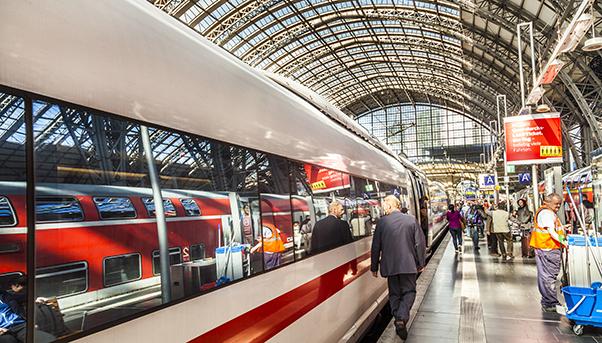“2016 is the year of the Juncker Plan, the biggest infrastructure plan that has ever been launched in Europe. The problem is that, like everything at the European Community level, the time period is rather long.” Daniel Gros is a German economist who studied at the Sapienza di Roma university before earning his doctorate in the United States. He has been a consultant for the International Monetary Fund (IMF) and has since become a director at the Centre for European Policy Studies (CEPS) in Brussels. He is both enthusiastic and worried about the plan. “The Juncker Plan is giving €315 billion to solve the problem of a chronic lack of investment in Europe, which is seen as the primary cause of economic stagnation across the continent. But since it was announced on November 26, 2014, it has had trouble getting started,” he says.
But bureaucracy at the Community level needs a lot of time…
“But it’s taking too long. Ecofin (Economic and Financial Affairs Council) approved the Juncker Plan on February 17. The European Commission approved the budget amendment to finance it on May 8. The European Investment Bank (EIB), which will act as the plan’s operating arm, officially approved the agreement with the Commission on July 20. Last summer, the European Fund for Strategic Investments (EFSI), a fund tied to the EIB, was started up. So, finally, it should become operative at the beginning of the new year. Of course, it starts off in the face of doubts and scepticism but at least it’s worth seeing what it’s all about”.
But the mission to relaunch investment in infrastructure is worthwhile. How’s it going to go?
“We’re all hoping that it will be fine. In the eight years since the beginning of the financial crisis, investments, both public and private, have dropped 20% in Italy, 45% in Spain, 18% in Holland and 17% on average in Europe. Even in Germany, despite its virtuous surplus, they haven’t risen more than 4% and 2% in France. As a whole, according to EU (European Union) estimates, the drop in investment has been equal to €550 billion between 2007 and 2014. These were years when there were calls for decisive action in Europe. The Plan that was finally approved was supposed to be bigger since it has to relaunch investments and bridge the infrastructure gap that exists in all of Europe, Germany included. And it was supposed to be accompanied by a series of measures to integrate markets in energy, transportation and telecommunications. These are all sectors that continue to have different rules in various countries, which complicates the possibility of making transnational investments.”
But what is the real size of the project?
“The official figure is €315 billion in three years, but the fund is no more than €21 billion, €16 billion from the EU budget and €5 billion from the European Investment Bank, which will take on an operative role. The Juncker Plan will make up a quarter of the activity of the BEI (equal to €80 billion of financing in 2014) for which the ESFI fund has been set up. The key to this is the leverage effect. All investments will be co-financed by the public and private sectors and for a long list of projects that would otherwise not be able to start for lack of private financing there’s hope in the fact that businesses will be encouraged to work with the EIB. What’s more is that it guarantees the so-called first loss: if a project goes wrong, the EIB will cover the cost.”

Frankfurt station
So what’s your opinion of this initiative?
“There are many reasons to be sceptical, this will not be the hoped-for ‘Growth Pack’. But the change in direction from the German brand of orthodoxy that saw budget discipline as the only point of reference is remarkable. If the Plan succeeds, it will be one of the pillars of the European recovery along with the banking union, the monetary measures of the ECB (European Central Bank) and the capital markets union, which is being prepared. We can’t underestimate the efficiency shock: in many European countries including Italy only half of the investments made by the public sector translate into cumulative productive assets due to inefficiencies, waste, corruption and organized crime.”

